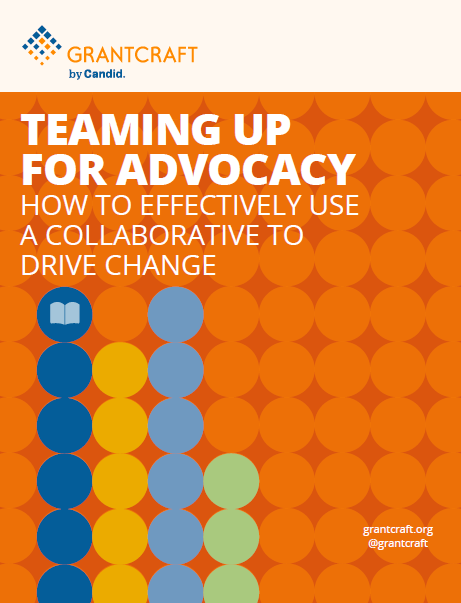Sticking Points: Chasing the Money
A perpetual challenge in funder advocacy collaboratives is making sure there are adequate funds for grantmaking, which usually requires members or, if an intermediary is being used, staff to fundraise. And, like any fundraising, there’s always tension between the need to secure contributions and maintaining a commitment to the mission or goals of the collaborative. As one funder notes, “Advocacy collaboratives are balancing two things: developing the collaborative’s work and building support for it at the same time by getting support from other funders. As you add new funders, you need to stay true to the vision.”
Making sure the collaborative is sustainable also requires the group to “constantly bring in new members,” which can “give up some sense of loyalty to the old group. And that can lead to tensions. Like any social club, the tensions between new and old members are always there. It’s hard for any entity to be adaptive.”
How can advocacy collaboratives sustain financial realities?
-
Work with talented fundraising staff and members.“We’ve had two phenomenal directors for our advocacy collaborative. When one came in 2006, they’d already run a similar kind of large collaborative that was very successful, and understood what it meant to serve both donors and grantees, take fundraising seriously, and organize donors. From this director, we all learned about the profession of donor relations. When they came, we were at $3-4 million, and when they left, we were at $16 million, but we were worried we’d lost our secret sauce. But we got someone with even more experience in the substantive work and equally as smart and skilled at donor relations, which has been key to our success.”
-
Develop budget savvy. “It’s important for collaborative staff to not only have substantive knowledge about the issues, but to also know how to do advanced budgeting and juggle a lot of pots of money. They need to know how to keep the spreadsheets about what everyone’s given, all the grant terms (that are different) and each initiative’s sub-budget in their head. Our directors have always been good at figuring out ‘where can we get the money to do this? And is there a donor to do it?’ And they’ve been good at collaborative juggling—there are so many pots of money, they had to be matchmakers, as well as make sure we were going to make it to the end of the year with enough money. That’s not the normal program officer skill set, so the collaborative staff needs to have it.”
-
Cultivate new members who are a good fit….before there is a financial crisis. Advocacy collaboratives suffer when new members are invited into the group that may not be a good cultural fit. Spending time strategically inviting new members who will grow the group’s financial capacities and contribute meaningfully programmatically and to the group dynamic works towards long-term sustainability.
NOW REFLECT:
- What are our fundraising goals? Do we have a plan or process to ensure sustainability?
- Do we have staff and/or members with fundraising and budgeting skills? If not, how can we strengthen our capacity in these areas?
- Do we have clear parameters about “chasing the money” and/or what we’ll do if this is taking precedence over our mission or program goals?
FURTHER READING:
- Catalyzing Regional Economic Transformation: Lessons from Funder Collaboration in Northeast Ohio
- Leveraging Limited Dollars: How Grantmakers Achieve Tangible Results by Funding Policy and Community Engagement
Please click here for information on GrantCraft’s methodology for this research.


